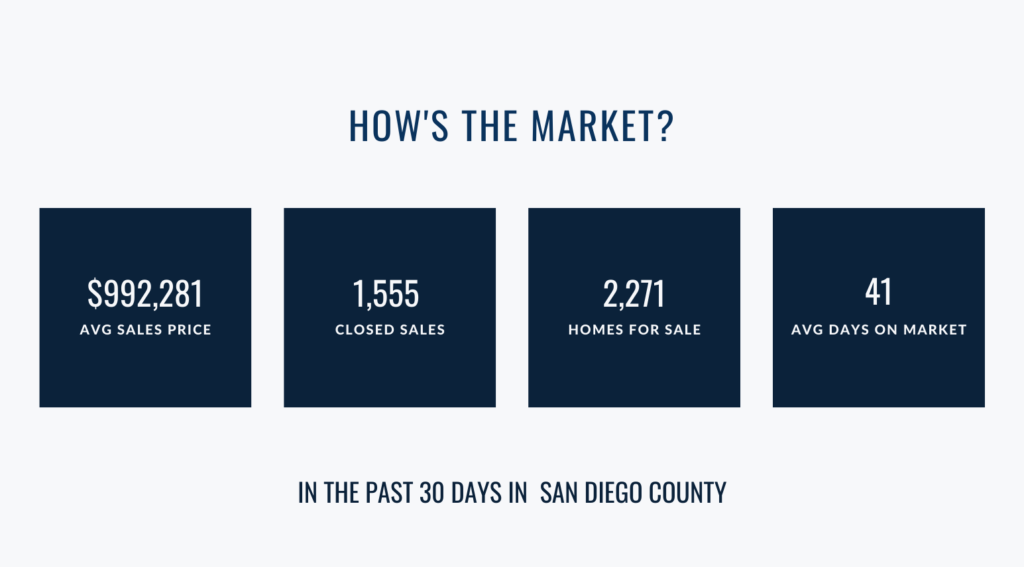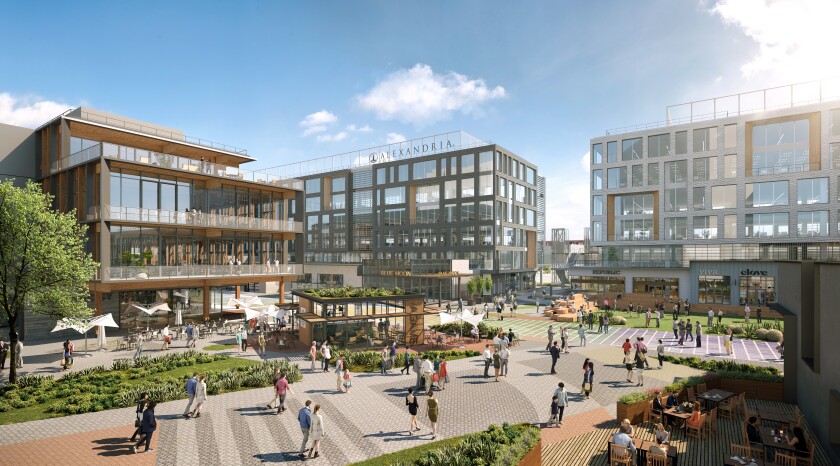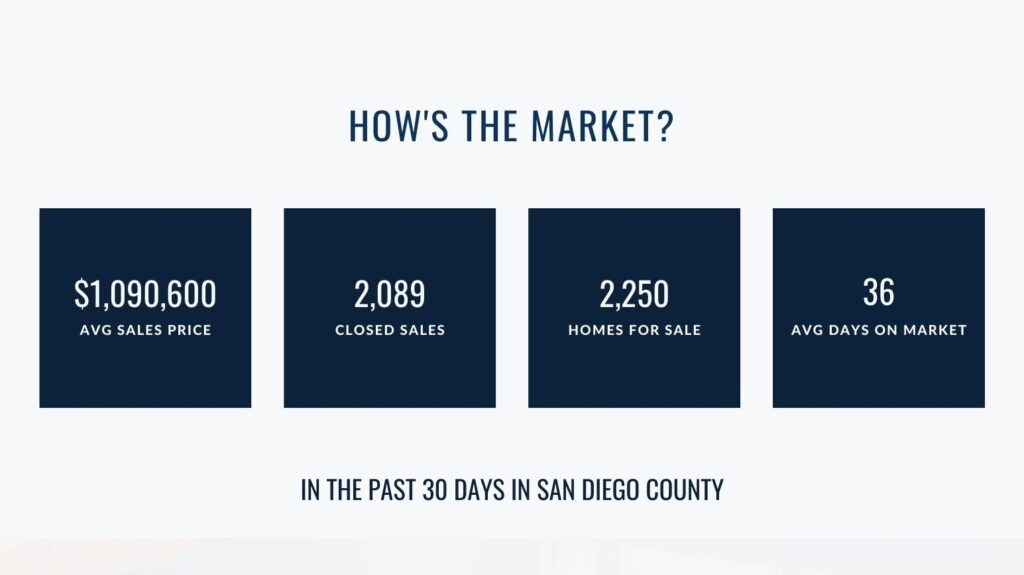Renters insurance can offer much-needed security when the unexpected occurs, whether it be due to fire, hail, or human error. However, new study reveals that many people opt not to get coverage, even in areas that are often and severely affected by natural catastrophes.
According to NerdWallet’s most recent analysis, the average cost of a renters insurance coverage in 2023 will be $148 per year, or roughly $12 per month. That figure is based on a hypothetical 30-year-old’s insurance with $30,000 in personal property coverage, $100,000 in liability coverage, and a $500 deductible, but coverage rates vary greatly by state and policy options.
According to a 2022 assessment by Harvard University’s Joint Center for Housing Studies, only approximately 40% of rental households buy renters insurance, while 88 percent of homeowners do, per a 2023 study by the Insurance Information Institute.
“The cost of insurance products can act as a barrier,” the researchers concluded. Some consumers choose not to get insurance, particularly if they are ignorant of their risks or believe that their risks can be controlled.
According to the Financial Health Network, when asked why they don’t buy renters insurance, more than one-third of those surveyed stated the cost was “too expensive” and they didn’t think they needed it.
According to the Financial Health Network, states with higher-than-average annual losses include California, Florida, Louisiana, Texas, and Washington. Flooding, hurricanes, landslides, wildfires, and other unexpected weather occurrences like tornadoes are among the causes of the losses.
The authors of the paper state that “Losses from natural disasters are an equity issue.” Financial vulnerability was more common among citizens of high-loss states than low-loss states.
Renters are not liable for paying for building repairs after a disaster, but they are still required to replace or fix any damaged or lost personal property. The problems are made worse by the fact that renters often have poorer salaries, less wealth, and worse financial health than homeowners.
Changes in structural policy are suggested by the Financial Health Network report’s authors. They recommend that states impose grace periods for consumers who have financial difficulty and struggle to pay insurance payments, in order to assist renters in maintaining coverage in the event that they encounter cash flow concerns. Additionally, they advise landlords to encourage renters to purchase rental insurance by making it a mandatory expenditure that they can opt out of rather than in to.
WHAT SHOULD I UNDERSTAND CONCERNING PURCHASING RENTERS INSURANCE?
This distinction between the types of compensation a policyholder receives following losses is made by insurance firms. Essentially, which would you want to receive: the cost of replacing what you own, which is typically higher because items decay with time, or the dollar value of what you hold (the “cash value”). Paying the “replacement cost” will result in a higher monthly premium.
WHAT DOES RENTERS INSURANCE COVER?
The majority of renters insurance coverage cover:
– Defense of private property. The insurance provider compensates (less your deductible) if your possessions are lost, stolen, or destroyed.
– Medical expenses and liability. The insurance provider will pay if you are held accountable for someone getting hurt or property becoming damaged in your house.
– Loss of utility. The insurance plan might pay for hotel costs and other unforeseen expenses during the interim if you need to relocate after a disaster while your home is being repaired.
ALWAYS REMEMBER TO UPDATES THE POLICY.
2 Bedroom House For Sale in San Diego
I’m here with the Big Opportunity: A Furnished 2 Bedroom home for You. A very Restful and soothing Location because there is no noise from vehicles. Tiny Garden is present at the entry point which carries followers and grass. Isolation of the Home is second to none and more than supreme.
Rooms
Rooms are made up of metal which shows sleek and chic. Lacquered glass is used for its radiant look.
A well-furnished and flourished room. The area of the rooms is so immense and vast. Rooms have an appropriate source of daylight and sunshine. It displays the whole outside view. This prettiness and cuteness will inspire you.
TV Area
TV Lounge is made by the contrast of Metal and glass. The TV Lounge has cute furniture and a big screen to enjoy the Cheerful and cherry moments. Darker and blinking lights are there to make you amused by fun. Fabric glass is placed inside the TV Lounge to seize the outsider noise. There is a cherished place for delicious dinners.
Bathrooms
Ceramic tiles are being used for the bathroom. These tiles are pure of scratches and spots. These are attached to the rooms. The fresh clean, bright vibe you will love.
Parking
It holds stunning and deluxe parking. It contains a very open place for parking vehicles. The Security system is rigid and Inflexible.
Roof View
The roof view is first-rated and High-rated, which displays the whole city sight. This is so a relaxed place for the amusement of inner Calm. The roof view is the deeper source of sunlight to get vitamin D. There is enough area for playing indoor games on the roof.
Walkability
Food Street is near the Home. It exists at a bit of distance. Special and infrequent hotels are here to serve you rich and lavish food.
Kitchen
San Diego’s home kitchen is luxurious and commendable. It contains a big exhaust for the removal of heat energy. There is a big glass placed for an outside view. An Air Conditioner facility is available there. The kitchen sight is delightful and a reason for coolness. Water filtration and Gas connections are available for your ease. The home has water and gas meters.
Life
This area serves every facility needed by Human Beings. A prestigious park is nearby. Playgrounds for outdoor games are also there and reputable and luxuriant institutions are within walking distance.
Exist Point
A secret exit point was made in the basement for the emergency. A switch is also placed for the blockage of Electricity during accidental moments.
Useful: Guide To Buying Your First Home In San Diego!
Please Do Contact me For a 2 Bedroom House For Sale in San Diego
Buying a home is a big decision and one of the biggest investments you will make in your lifetime. With so many options available, it can be overwhelming to find the right one. But don’t worry, we’ve got you covered.
- Understanding Your Needs
Before you start searching for a new house for sale,it’s important to understand your needs and wants. This includes the type of property you are looking for, the number of rooms you need, the location, and your budget. Write down a list of your priorities and use it as a reference when you start looking for a new home.
- Determine Your Budget
Once you know what you need and want in a new home, it’s time to determine your budget. This will help you narrow down your search and avoid looking at properties that are out of your price range. It’s important to consider all the associated costs when buying a new home, such as closing costs, property taxes, insurance, and any necessary repairs or renovations.
- Research Your Options
With your budget and needs in mind, it’s time to start researching your options. There are many resources available to help you find new homes for sale, including online real estate websites, real estate agents, and local newspapers. Take your time to explore different options and keep an eye out for any new developments in the area.
- Contact a Real Estate Agent
Working with a real estate agent can be beneficial in the home buying process. They have extensive knowledge of the local market and can help you find properties that match your criteria. They can also assist with negotiating the best deal for you and handle all the paperwork involved in the transaction.
- Inspect the Property
Once you have found a new home that meets your needs and budget, it’s time to inspect the property. A thorough inspection can help you identify any potential issues with the property and determine if it’s a good investment. You can either hire a professional inspector or do the inspection yourself.
- Make an Offer
If you decide that the property is the right one for you, it’s time to make an offer. Your real estate agent can assist with this process and help negotiate the best deal for you. Once your offer is accepted, it’s time to move on to the next step, which is closing the deal.
- Closing the Deal
The final step in the home buying process is closing the deal. This involves signing the necessary paperwork and transferring ownership of the property. Your real estate agent can assist with this process and ensure that everything is handled smoothly and efficiently.
New Houses for Sale Near You
Are you looking for a new home in a specific area? Here are some of the latest new houses for sale near you:
- New Houses for Sale in London
London is a bustling city with a rich history and culture. If you’re looking for a new home in this vibrant city, there are many options available, including stylish apartments, spacious townhouses, and elegant detached homes.
- New Houses for Sale in Manchester
Manchester is a vibrant city with a thriving arts and culture scene. If you’re looking for a new home in this exciting city, there are many options available, including modern apartments, spacious townhouses, and elegant.
Are you dreaming of the coastal breeze, sunny days, and lively nightlife in San Diego? If so, now is a great time to buy your dream home here. With an ideal blend of urban buzz and a relaxed beach lifestyle, no wonder it’s one of the most desirable cities to live in!
Understanding modern homes for sale San Diego market trends and how they impact your purchase will make all the difference, whether this will be your first purchase or investment property. In this article, we will offer tips on how you can find ‘the right time’ to invest in official residency status within this beautiful city full of charm.
How to Buy a House in San Diego at the Right Time?
Listed below are some factors that affect the San Diego housing market.
Economic conditions
A strong economy could cause a buyer’s market that is a greater demand for homes than supply. This could increase prices for homes. However, a weaker economy could cause a buyer’s marketplace where there is more demand than supply and prices are more flexible.
Market for jobs
San Diego’s thriving job market and various sectors, including defense, healthcare tourism, and healthcare, can stimulate the demand for housing. If more employment opportunities exist, people could be more inclined to move from San Diego and buy a house.
Seasonality
Like other cities, San Diego’s market for housing tends to be more active during certain seasons during the calendar year. For instance, summer and spring are generally the busiest for home purchases and selling, whereas autumn and winter are usually slower. This is because families with children are more likely to relocate in the summer months to avoid disrupting the school year.
Rates of interest
The interest rates on mortgages can affect the affordability of houses. When interest rates are lower, they can make it easier for buyers to get the mortgage they need and finance an apartment. If interest rates are very high and rising, it could be more challenging for buyers to be eligible for loans and pay the monthly mortgage payment.
Buying a home in San Diego: Tips for Choosing the Right Time
Examine the economy
When the economic situation is doing well, and unemployment is low, this could be a seller’s marketplace within San Diego, with higher property prices. When the economic situation is less robust and unemployment is more remarkable, it could be a buyer’s marketplace with higher-than-average costs.
Be aware of the rate of interest.
As previously mentioned, mortgage interest rates can significantly affect a home’s affordability. If you’re looking to purchase a house in San Diego, it’s a sensible plan to monitor interest rates and find times when interest rates are at their lowest.
Take a look at your financial situation.
Before beginning your search for a new home, It is crucial to consider your financial situation and figure out how much you can invest in a house. You should have a reasonable budget and know how much you can manage to pay for closing expenses and monthly mortgage payments.
Think about the season
As previously mentioned, the summer and spring seasons are the most crowded for home buyers in San Diego. If you’re flexible when searching for your next home, it is possible to find a better price when you search in the winter or fall months, which have less competition from buyers.
Buy House: https://opalteamsocal.com/basic-search/
Are you searching for a place to call home with plenty of activities and amenities? San Diego has something for everyone and is the perfect destination if you’re looking for modern homes for sale. From beach properties with stunning views to downtown condos filled with charm, this city holds endless possibilities just waiting to be discovered.
With some of the best real estate market conditions in years and a thriving historical culture, now’s your chance to find and purchase your slice of paradise in San Diego!
Modern architecture encompasses structural designs that began early into the early 20th century and transformed into numerous sub-genres. Rapid advancements mostly influenced the growth of this style of architecture and the subsequent variations in technology in the early 20th century.
The popularization of the Modern architectural movement increased dramatically following World War II, coinciding with a time of rapid growth in San Diego. This is why one of its most well-known residential variations, Mid-century Modern homes, is so popular across the region.
Where to live in San Diego for the cheapest price?
San Diego is a large and diverse city in its county, which is connected with a variety of prosperous communities that directly impact its lifestyle, culture, and many other aspects. This is why the standard of living and costs are extremely high for San Diego compared to other cities.
Alongside the high cost of living in city centers, some cities or places are less expensive in terms of cost and living expenses. You can try new homes in San Diego under $700k. These cities could be great choices for those who want to purchase or obtain a rental property at an affordable price. I’ve compiled the following information on the most affordable and affordable areas around San Diego.
The Normal Heights
Normal Heights is among the cheapest and most affordable areas for residents located in San Diego. The area is diverse and is located in central San Diego County. The normal heights are known for their rich culture, low living expenses, and affordable houses. At the average height, prices for a standard-size house are approximately $700,000, and rents are lower than in other regions in San Diego.
Additionally, normal height is an important hub for small-scale businesses and other community groups. Because of this, this area is a very popular choice for people looking for a location where they can experience a range of community services and cultural backgrounds.
The Linda Vista
Linda Vista is another of the cheapest areas to live in in San Diego. It is located in the southeast portion of the city. It is well-known for affordable and affordable homes and a diverse population, which is the primary need of every person. The average cost for a home in Linda Vista is close to $735,000, and the rentals are also lower compared to other areas in the city.
In addition, Linda vista is also an ideal option for those looking to experience the variety of facilities, resources, and other amenities in San Diego, even living at the cost of a smaller home.
Every 5 mins, there’s an update of the latest properties available to be sold at Pacific View Estates San Diego, including townhomes, houses, multi-family homes, and condos, which are posted on the website through Pacific View Estates real estate agents and brokers. This article will explore pacific view real estate in San Diego. Stay tuned!
Pacific Beach
Sloping westwards from the base towards the west of Mount Soledad along the Northern shores of Mission Bay is Pacific Beach (known as PB to locals), among the most sought-after beaches. The waves that make up its name ebb and flow across the vast beaches of this town as its visitors and residents can enjoy top-quality eating, local stores with a welcoming nightlife scene, and numerous outdoor activities.
The town’s street grid so that the neighborhoods are walkable to nearby amenities. The high-quality California school district and freeway access allow family members to flourish, whether going to school on foot, work, or heading off for their next adventure through San Diego Airport, just several miles south.
1237 Van Nuys St, CA 92109
The home has a modern style both on the exterior and the interior, features custom cabinetry throughout, an elevator that starts at the garage’s 2-car level and allows access to all stories, Decor appliance package, modern tile, and quartz countertops designs in every bathroom.
This contemporary new construction, with stunning views of the ocean, bay, and San Diego city views, is situated inside The North Pacific Beach neighborhood minutes from La Jolla. The five-bedroom 4-1/2 BA 3,410 square feet property is one that you should take notice of, with views across the entire property area, terraces, and its sought-after rooftop terrace.
The stone island features an integral walnut dining table to accommodate inside dining. Options for entertaining on the main floor include the enclosed courtyard with privacy screens or the built-in BBQs in the living and kitchen area for the ultimate indoor-outdoor experience.
The windows and sliding doors all over the house capture stunning panoramas and the ocean’s cool breeze throughout all levels of the home. White-oak engineered flooring throughout with designer-grade carpeting in the bedrooms with secondary.
The staircase is an artisan-designed metal baluster with a slim round design. It also has an oak top cap handrail. The master bedroom has a private patio with ocean and city views, a separate coffee bar, and a custom cabinet closet. The property is architecturally developed in the hands of Will & Fotsch in La Jolla and built to order through California Home Builders, Inc.
3645 Buena Vista St, CA 92109
The stunning single-level house offers a unique blend of classic and contemporary features, making it unique. The traditional oak wood floors welcome you upon entering the property and lead to the newly renovated interior. The main suite is spacious and has double vanities and two closets, and a contemporary freestanding tub. The gourmet kitchen will delight even the most sophisticated chef, with stainless appliances, two ovens, and a large pantry.
The stunning single-level house offers a unique blend of classic and modern amenities that make it truly unique. The kitchen’s vaulted ceilings and the seating on the island are ideal for hosting. Enjoy the outdoor lawn or watch a sunset from the west-facing porch. The driveway is extended to allow plenty of parking and two-car garages. Additionally, the property is ideal for investment as it has Tier 3 permits accessible. Take advantage of this incredible opportunity!



San Diego city is a huge and diverse city within its county. It is interspersed with numerous prosperous communities that directly impact its lifestyle, culture, and other aspects. Because of this, the standard of living and living costs are extremely high within San Diego compared to other cities.
Suppose you’re wondering whether you should purchase a house in San Diego or get it on rent before making a final decision. In that case, it is important to know the advantages and disadvantages of buying and renting. This will help you make an informed decision that reduces your risk of loss in the longer term.
Before choosing to purchase or rent a home within San Diego, you should consider a few factors, such as objectives, living standards, the security of your job, the mortgage rate, and your monthly costs as other factors.
Do you prefer to rent or purchase the property in San Diego?
I’ve listed the advantages and disadvantages of purchasing and renting a home within San Diego. After reviewing the advantages and disadvantages of purchasing or renting, you can decide whether you should purchase the house you want or rent.
Pros and Cons of renting a house located in San Diego:
Pros:
- If you are renting and you live on rent, then you don’t have to think about the care of your house. Usually, the responsibility for maintenance falls on the property owner.
- In addition, having a house to rent is a cost-effective solution for a short-term budget because the monthly rental of properties in San Diego is less than the mortgage rate.
Cons:
- When you rent an apartment, it is not peaceful since, in the end, it’s the home of another.
- Housing costs can also fluctuate frequently, so you’ll consider purchasing a home to satisfy yourself.
- Furthermore, it is also the choice of the landlords to extend your lease. In a rented house, there is only a choice but to change your lease based on what you want.
Pros and Pros of buying a house in San Diego:
Pros:
- If you decide to purchase a property you own, it will provide tranquility, security, and peace of mind since the landlord is you.
- San Diego’s Ocean Beach (O.B.) neighborhood is an iconic Southern California beach town. Once you’ve pulled towards the center of the town it’s clear the vibrant community has adopted an eclectic culture, forged by surfers who made Ocean Beach home at the beginning of the century. The current residents continue to carry on their Ocean Beach legacy and ensure that the area of the Pacific coastline is accessible for all who wish to take advantage of it. Many San Diego ocean view homes for sale can be your best choice for buying a home.
- You don’t have to worry about fluctuations in the amount of rent.
- If you’re a home proprietor, it’s a long-term investment and a resource that will last for a long time. Also, it allows you to modify your home depending on your requirements.
Cons:
- If you purchase a property with a mortgage, it may make you liable to pay the mortgage over a longer period.
- The market for real estate in San Diego is highly competitive, which means that for brand new buyers, it may be difficult to get into the market for housing in San Diego if they need to make more.
All should reside within San Diego due to its prosperity, diverse economy, and a highly competitive real market for real estate. The average cost for a San Diego home is around $750,000. That’s 7.9 percent higher than the prior year and could increase to 6.8%in the next couple of months, according to the predictions of real estate experts.
In preparation for the upcoming trolley terminus that will link to the property, the owner of the Costa Verde shopping center opposite Westfield UTC plans to demolish its 31-year-old strip mall and replace it with something more suitable. The revitalization effort, which has been in the works since 2015, hopes to merge community retail with a modern, 400,000 square-foot life science campus and a 200-room business hotel.
On Thursday, the San Diego Planning Commission gave its approval to Regency Centers, located in Jacksonville. Commissioners agreed unanimously to suggest approval of a general plan amendment, a community plan amendment and certification of the project’s environmental analysis.
The Costa Verde center, located at 8560 Genesee Ave., between La Jolla Village Drive and Nobel Drive, was constructed in 1989 and now features 178,000 square feet of retail space on a 13.9-acre tract, most notably including McDonald’s, Chevron, and Bristol Farms. With the redo, Regency and its partner Alexandria, a San Diego-based life science real estate developer, are retaining the quick food joint and the gas station, and sustaining the same square footage of retail. But it’s all getting a makeover to look more like a modern urban employment hub, replete with a plaza for events, more restaurants, and more greenery.
Co-Chief Investment Officer Dan Ryan of Alexandria reaffirmed the ambitious objective, telling commissioners that the project is unlike any other on the West Coast due to its accessibility to both talent and transportation. Ryan’s company will construct and manage the research and development portion, which he estimates will attract out-of-town companies already interested in the college town’s biotech cluster with its potential workforce of up to 2,000 scientists.
Regent and Alexandria are both contributing their own money to the venture, making them equal partners. The amount spent on the endeavor was kept secret. The current iteration of the project will cost significantly more to construct than the earlier iteration, which was estimated at $230 million before Alexandria became involved.
Location at the end of the future Mid-Coast Trolley line, which will link downtown to University City, and proximity to housing are two of the project’s biggest selling points, according to both developers and commissioners. There are supposedly around 18,000 homes within a mile of the location. A station platform between the two Alexandria office buildings on Genesee will provide access to the center for commuters (likely students, employees, and shoppers). The same station provides access to the eastbound Westfield UTC.

All six commissioners agreed that the new building would be an upgrade over the old one. The majority of speakers at the public hearing were in favor of the project, but attorney Christina Caro, speaking on behalf of the San Diegans for Sustainable Economic and Equitable Development (SD SEED) coalition of labor organizations, voiced opposition to the project due to its potential negative effects on noise, air quality, and transportation. According to her, the environmental impact report exaggerates the number of trips to new stores while underestimating the number of trips to established ones.
According to the city’s estimates in the final environmental study, the project will increase the average number of daily vehicle trips at several intersections by 4,981. Next month, the City Council will vote on the issue after it has been approved by the Planning Commission. Regency Centers plans to begin demolition in June, with the goal of having the majority of the work done by the 2023 Christmas season.


